The 20 Best Albums of 1983
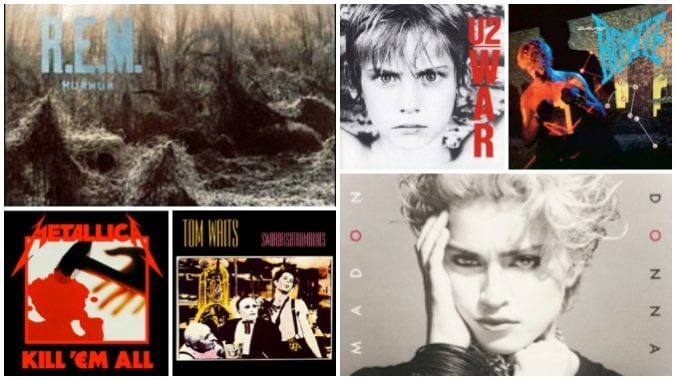
Today we look back at the best albums of 1983. Forty years ago, R.E.M. and Madonna released their debut LPs and U2 had their first international hit. Michael Jackson’s Thriller was released the previous November but would spend most of the year at the top of the charts before the December debut of his 14-minute video for the song on MTV. It was the year Dave Mustaine was fired from Metallica, Mick Jones was fired from The Clash and The Rolling Stones signed a record-breaking $28 million deal with CBS Records. In 1983, we’re reaching the heart of what we think about when we think about the 1980s. Here, voted on by the Paste music writers and editors, are the 20 best albums of 1983. You can also listen to our Best 1983 Albums Spotify playlist.
20. Marine Girls: Lazy Ways Taking cues from their forebears in Young Marble Giants, Marine Girls stripped their instrumentation down to the barest of essentials: a strangely tuned guitar, stately bass playing, stray bits of percussion, and the distinctive vocals of co-leaders Jane Fox and Tracey Thorn. There was little else like this in the U.K. indie scene of the time, and no one has managed to replicate the daring beauty and unkempt charm that this quartet accomplished during their short stint together. Their second album especially has a quiet weirdness that feels like a language made up by the closest of close friends. If the Lisbon sisters of The Virgin Suicides grew up in late ’70s England, this is the music they would make.—Robert Ham
Taking cues from their forebears in Young Marble Giants, Marine Girls stripped their instrumentation down to the barest of essentials: a strangely tuned guitar, stately bass playing, stray bits of percussion, and the distinctive vocals of co-leaders Jane Fox and Tracey Thorn. There was little else like this in the U.K. indie scene of the time, and no one has managed to replicate the daring beauty and unkempt charm that this quartet accomplished during their short stint together. Their second album especially has a quiet weirdness that feels like a language made up by the closest of close friends. If the Lisbon sisters of The Virgin Suicides grew up in late ’70s England, this is the music they would make.—Robert Ham
19. The B-52’s: Whammy!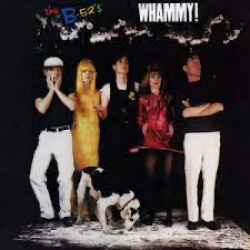 When it was time to record album #3, B-52’s’ Keith Strickland had had enough of playing the drums. A multi-instrumentalist, he chose instead to work closely with guitarist Ricky Wilson and left the rhythm business to a drum machine. While it sounds perfectly of its time now, back then, it was a small shock to hear the Athens band go from the loose, jumpy New Wave of their first two full-lengths to a relatively stiff motorik sound. True artists that they are, the quintet made it work and made it work well. There’s plenty of hopped up energy to be had in tunes like “Butterbean” and the delirious “Work That Skirt,” and with wowing synths and slightly tinny beats adds some Southern swing to an otherwise robotic sound. The album is worth it alone for the brilliant and infinitely quotable anthem “Song For a Future Generation,” a goofball play on ’60s love song tropes that soon became an MTV favorite. —Robert Ham
When it was time to record album #3, B-52’s’ Keith Strickland had had enough of playing the drums. A multi-instrumentalist, he chose instead to work closely with guitarist Ricky Wilson and left the rhythm business to a drum machine. While it sounds perfectly of its time now, back then, it was a small shock to hear the Athens band go from the loose, jumpy New Wave of their first two full-lengths to a relatively stiff motorik sound. True artists that they are, the quintet made it work and made it work well. There’s plenty of hopped up energy to be had in tunes like “Butterbean” and the delirious “Work That Skirt,” and with wowing synths and slightly tinny beats adds some Southern swing to an otherwise robotic sound. The album is worth it alone for the brilliant and infinitely quotable anthem “Song For a Future Generation,” a goofball play on ’60s love song tropes that soon became an MTV favorite. —Robert Ham
18. Brian Eno: Apollo: Atmospheres Originally intended as the soundtrack to For All Mankind, the documentary about the Apollo space program, this 1983 album preceded the film by six years. In the interregnum, the album became another chapter in Brian Eno’s early explorations of ambient music. With some assistance from his brother Roger and regular collaborator Daniel Lanois, Eno evokes the vastness of the universe, floating gravity free within a spacecraft or bouncing on the lunar surface or gazing in awe at the night sky through layers of synths and a judicious application of Lanois’ guitar and pedal steel. Apollo has since become a major touchstone in the cultural world as some of its dreamier tunes have been frequently repurposed for other film and TV soundtracks, and sampled liberally by a few generations of electronic artists. —Robert Ham
Originally intended as the soundtrack to For All Mankind, the documentary about the Apollo space program, this 1983 album preceded the film by six years. In the interregnum, the album became another chapter in Brian Eno’s early explorations of ambient music. With some assistance from his brother Roger and regular collaborator Daniel Lanois, Eno evokes the vastness of the universe, floating gravity free within a spacecraft or bouncing on the lunar surface or gazing in awe at the night sky through layers of synths and a judicious application of Lanois’ guitar and pedal steel. Apollo has since become a major touchstone in the cultural world as some of its dreamier tunes have been frequently repurposed for other film and TV soundtracks, and sampled liberally by a few generations of electronic artists. —Robert Ham
17. Cyndi Lauper: She’s So Unusual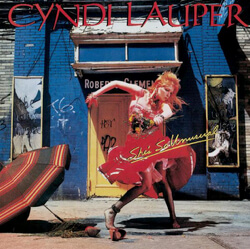 Cyndi Lauper became the first female artist to have four Top 5 singles on the Hot 100 after releasing her debut album She’s So Unusual in 1983. More remarkable was the range of those hits: the synth-pop party of “Girls Just Want to Have Fun”; the pared-down ballad “Time After Time” she co-wrote with The Hooters’ Rob Hyman, who sings back-up on the song; the New Wave blues of masturbation anthem “She Bop”; and the optimistic love song “All Through the Night.” All those tracks, along with the Brains cover “Money Changes Everything” hold up four decades later, despite every synth tone representing the sound of the 1980s as much as possible. Cyndi Lauper arrived as an original—her voice, her sound, her look and songs—and there’s been no one like her since. —Josh Jackson
Cyndi Lauper became the first female artist to have four Top 5 singles on the Hot 100 after releasing her debut album She’s So Unusual in 1983. More remarkable was the range of those hits: the synth-pop party of “Girls Just Want to Have Fun”; the pared-down ballad “Time After Time” she co-wrote with The Hooters’ Rob Hyman, who sings back-up on the song; the New Wave blues of masturbation anthem “She Bop”; and the optimistic love song “All Through the Night.” All those tracks, along with the Brains cover “Money Changes Everything” hold up four decades later, despite every synth tone representing the sound of the 1980s as much as possible. Cyndi Lauper arrived as an original—her voice, her sound, her look and songs—and there’s been no one like her since. —Josh Jackson
16. Yes: 90125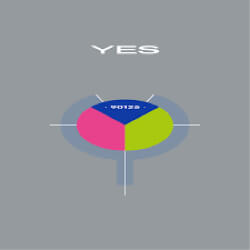 Although 90125 didn’t actually start out as a Yes album, it occupies a tremendously important place in the band’s long, winding history. For starters, it’s the most commercially successful title in the entire Yes discography. Its signature single, “Owner of a Lonely Heart,” achieved radio immortality pretty much out of the gate (and not without good reason), securing the band’s status as a household name—to this day, you can walk into a karaoke or ’80s night anywhere and casual listeners will likely recognize the song. Of course, 90125 departed radically from Yes’s brand as prog godfathers. But what’s often overlooked is that Yes had always possessed the spirit and motor of a kick-ass rock band. Even when they’d delved into New Age meditations about Paramahansa Yogananda at their height of proggy indulgence, they retained a power that carried over into the quintessential ’80s-pop style they adopted for 90125. The album thumps and clangs with the mechanized sound that dominated the era, but appearances can be deceiving. Despite the gleaming sonic architecture, late bassist Chris Squire and late drummer Alan White drove the music as hard as they ever had. Meanwhile, then-returning singer Jon Anderson’s beauteous melodies lifted encouraging sentiments like “hold on—wait, maybe the answer’s looking for you” to stratospheric heights. And, with the production and songwriting stewarded by former member Trevor Horn and then-new guitarist Trevor Rabin, 90125 gelled into one of the most catchy, unique-sounding and solidly crafted albums of its decade. —Saby Reyes-Kulkarni
Although 90125 didn’t actually start out as a Yes album, it occupies a tremendously important place in the band’s long, winding history. For starters, it’s the most commercially successful title in the entire Yes discography. Its signature single, “Owner of a Lonely Heart,” achieved radio immortality pretty much out of the gate (and not without good reason), securing the band’s status as a household name—to this day, you can walk into a karaoke or ’80s night anywhere and casual listeners will likely recognize the song. Of course, 90125 departed radically from Yes’s brand as prog godfathers. But what’s often overlooked is that Yes had always possessed the spirit and motor of a kick-ass rock band. Even when they’d delved into New Age meditations about Paramahansa Yogananda at their height of proggy indulgence, they retained a power that carried over into the quintessential ’80s-pop style they adopted for 90125. The album thumps and clangs with the mechanized sound that dominated the era, but appearances can be deceiving. Despite the gleaming sonic architecture, late bassist Chris Squire and late drummer Alan White drove the music as hard as they ever had. Meanwhile, then-returning singer Jon Anderson’s beauteous melodies lifted encouraging sentiments like “hold on—wait, maybe the answer’s looking for you” to stratospheric heights. And, with the production and songwriting stewarded by former member Trevor Horn and then-new guitarist Trevor Rabin, 90125 gelled into one of the most catchy, unique-sounding and solidly crafted albums of its decade. —Saby Reyes-Kulkarni
15. The Replacements: Hootenanny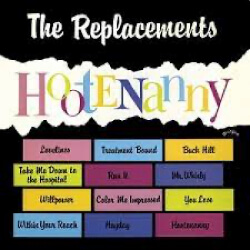 While The Replacements’ Hüsker Dü-referencing speed-punk debut Sorry Ma, Forgot to Take Out the Trash and subsequent slop-rock EP Stink sound culled from the same lo-fi/high-energy sessions, sophomore LP Hootenanny found the band diversifying beyond punk into blues, country, rockabilly, surf and even electronica. Standout “Color Me Impressed” finally proved that—in addition to heart and true punk-rock attitude—The Replacements had phenomenal songwriting chops. On the other hand, Hootenanny’s album-opening title track is a painfully tuneless wreck of a blues shuffle on which The Replacements irresponsibly swap instruments. The result sounds worse than most high-school bands at their first practice, but The Replacements still had the balls to not only put it on the record but lead with it. Of course, if they didn’t tank so grandly from time to time, they wouldn’t be The Replacements. They are the endearing juxtaposition of abject failure and wild success. And this is precisely what makes them so appealing—because they showed their listeners the amazing heights any of us could reach if we tried our best and remained, unapologetically, ourselves. But the kicker is that, while The Replacements did this, they refused to airbrush over their flaws, instead holding a magnifying glass up to them, and because of it they’re as human and relatable as any outfit in rock history. —Steve LaBate
While The Replacements’ Hüsker Dü-referencing speed-punk debut Sorry Ma, Forgot to Take Out the Trash and subsequent slop-rock EP Stink sound culled from the same lo-fi/high-energy sessions, sophomore LP Hootenanny found the band diversifying beyond punk into blues, country, rockabilly, surf and even electronica. Standout “Color Me Impressed” finally proved that—in addition to heart and true punk-rock attitude—The Replacements had phenomenal songwriting chops. On the other hand, Hootenanny’s album-opening title track is a painfully tuneless wreck of a blues shuffle on which The Replacements irresponsibly swap instruments. The result sounds worse than most high-school bands at their first practice, but The Replacements still had the balls to not only put it on the record but lead with it. Of course, if they didn’t tank so grandly from time to time, they wouldn’t be The Replacements. They are the endearing juxtaposition of abject failure and wild success. And this is precisely what makes them so appealing—because they showed their listeners the amazing heights any of us could reach if we tried our best and remained, unapologetically, ourselves. But the kicker is that, while The Replacements did this, they refused to airbrush over their flaws, instead holding a magnifying glass up to them, and because of it they’re as human and relatable as any outfit in rock history. —Steve LaBate
14. Cocteau Twins: Head Over Heels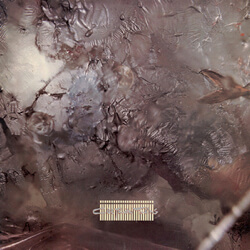 Reduced somewhat appropriately to a duo following the departure of founding bassist Will Heggie, Cocteau Twins core of guitarist Robin Guthrie and vocalist Elizabeth Fraser took a major step forward with their second album Head Over Heels. The dissonant, slashing sound that marked the group’s debut Garlands was replaced by a sound more akin to vivid dreaming or a psychedelic experience that is a little burnt around the edges. Fraser, especially, finds the pure power of her otherworldly vocals, and a softness that brings a fog of candyfloss to aching songs like “Sugar Hiccup,” “My Love Paramour” and the dramatic closer “Musette and Drums.” Guthrie, meanwhile, continued to explore the possibilities of what a guitar could do, processing it until it resembled sheets of Rothko-like color and texture while keeping just enough of the jagged approach of Garlands on hand. It stings and soothes simultaneously. —Robert Ham
Reduced somewhat appropriately to a duo following the departure of founding bassist Will Heggie, Cocteau Twins core of guitarist Robin Guthrie and vocalist Elizabeth Fraser took a major step forward with their second album Head Over Heels. The dissonant, slashing sound that marked the group’s debut Garlands was replaced by a sound more akin to vivid dreaming or a psychedelic experience that is a little burnt around the edges. Fraser, especially, finds the pure power of her otherworldly vocals, and a softness that brings a fog of candyfloss to aching songs like “Sugar Hiccup,” “My Love Paramour” and the dramatic closer “Musette and Drums.” Guthrie, meanwhile, continued to explore the possibilities of what a guitar could do, processing it until it resembled sheets of Rothko-like color and texture while keeping just enough of the jagged approach of Garlands on hand. It stings and soothes simultaneously. —Robert Ham
13. Minutemen: What Makes a Man Start Fires?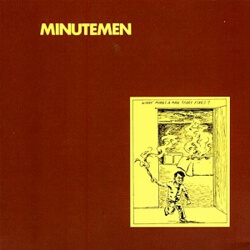 The sheer breadth of what San Pedro punks Minutemen accomplished in their short time together—four jam-packed albums, six EPs and multiple compilation appearances released in the span of five years, all of it essential listening—remains an unbeatable achievement. This album came at the midway point of the trio’s brief run and was their first true masterpiece. The band crammed 18 short, pointed songs on the album, only three of which cracked the two-minute mark. It all flies by in a flurry of jagged guitar chords, rubbery funk-inspired basslines and jazzy drumming. The glue keeping these various elements together is the group’s poetic lyrical doctrines praising hard work, lambasting capitalism and asking tough philosophical questions. The depth and complexity of the work is only made more impressive when you consider that the album was done and dusted in less than two days. —Robert Ham
The sheer breadth of what San Pedro punks Minutemen accomplished in their short time together—four jam-packed albums, six EPs and multiple compilation appearances released in the span of five years, all of it essential listening—remains an unbeatable achievement. This album came at the midway point of the trio’s brief run and was their first true masterpiece. The band crammed 18 short, pointed songs on the album, only three of which cracked the two-minute mark. It all flies by in a flurry of jagged guitar chords, rubbery funk-inspired basslines and jazzy drumming. The glue keeping these various elements together is the group’s poetic lyrical doctrines praising hard work, lambasting capitalism and asking tough philosophical questions. The depth and complexity of the work is only made more impressive when you consider that the album was done and dusted in less than two days. —Robert Ham
12. Huey Lewis and the News: Sports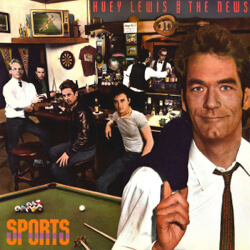 Sports, Huey Lewis and the News’ magnum opus, is one of the most underrated rock ’n’ roll records of its era. Few releases of the 1980s unveiled a line of singles as powerful and auspicious as “Heart and Soul,” “I Want a New Drug,” “The Heart of Rock & Roll” and “If This Is It.” Not to mention, this was two years before the band would again find acclaim for their role in soundtracking Back to the Future. Sports tackles everything from beloved Heartland music scenes to post-Vietnam War misgivings. It’s a lyrically adventurous album built like, as Lewis once called it himself, a collection of singles, and that lack of thematic binding is what makes the project so ageless. Sports conquered the radio and our hearts. The album wouldn’t hit #1 on the Billboard 200 until June 1984, but it would remain on the chart for over three years. To better understand the impact and legacy of Sports, it must be noted that it was the second-highest selling album of 1984. What LP topped it? Michael Jackson’s Thriller. The fact that Huey Lewis and the News were able to even come close to outmuscling the sales of Jackson’s masterpiece is one-in-a-million; Sports living on as the best pop-rock record of the 1980s is some kind of unthinkable destiny that washed over the cultural mainstream in such a perfect, endearing and limitless way. —Matt Mitchell
Sports, Huey Lewis and the News’ magnum opus, is one of the most underrated rock ’n’ roll records of its era. Few releases of the 1980s unveiled a line of singles as powerful and auspicious as “Heart and Soul,” “I Want a New Drug,” “The Heart of Rock & Roll” and “If This Is It.” Not to mention, this was two years before the band would again find acclaim for their role in soundtracking Back to the Future. Sports tackles everything from beloved Heartland music scenes to post-Vietnam War misgivings. It’s a lyrically adventurous album built like, as Lewis once called it himself, a collection of singles, and that lack of thematic binding is what makes the project so ageless. Sports conquered the radio and our hearts. The album wouldn’t hit #1 on the Billboard 200 until June 1984, but it would remain on the chart for over three years. To better understand the impact and legacy of Sports, it must be noted that it was the second-highest selling album of 1984. What LP topped it? Michael Jackson’s Thriller. The fact that Huey Lewis and the News were able to even come close to outmuscling the sales of Jackson’s masterpiece is one-in-a-million; Sports living on as the best pop-rock record of the 1980s is some kind of unthinkable destiny that washed over the cultural mainstream in such a perfect, endearing and limitless way. —Matt Mitchell
11. The Police: Synchronicity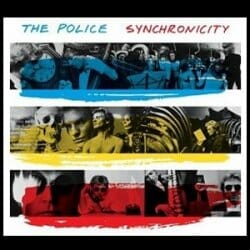 Most of us who love rhythm and propulsion and striking musical ideas moved on from Sting after his communion with Andy Summers and Stewart Copeland imploded, which makes it easy to forget that Synchronicity was a hell of a way to go. Their disparate sonics coalesced like few other ensembles in 1983, short of non-Western masters like King Sunny Adé’s African Beats, who wasn’t lost on them—“Walking in Your Footsteps” reins in Nigerian polyrhythms just after the opener reestablishes their New Wave bona fides. And just when you can’t take another experiment like Summers’ Freudian horror-laughfest “Mother” or the jazz-a-nova “Miss Gradenko,” they intuitively snap back into 1983’s best pop that wasn’t made by a Jackson: “Synchronicity II,” “Every Breath You Take” and the astronomically delicate “King of Pain.” All one after another. —Dan Weiss
Most of us who love rhythm and propulsion and striking musical ideas moved on from Sting after his communion with Andy Summers and Stewart Copeland imploded, which makes it easy to forget that Synchronicity was a hell of a way to go. Their disparate sonics coalesced like few other ensembles in 1983, short of non-Western masters like King Sunny Adé’s African Beats, who wasn’t lost on them—“Walking in Your Footsteps” reins in Nigerian polyrhythms just after the opener reestablishes their New Wave bona fides. And just when you can’t take another experiment like Summers’ Freudian horror-laughfest “Mother” or the jazz-a-nova “Miss Gradenko,” they intuitively snap back into 1983’s best pop that wasn’t made by a Jackson: “Synchronicity II,” “Every Breath You Take” and the astronomically delicate “King of Pain.” All one after another. —Dan Weiss
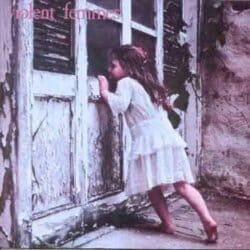 10. Violent Femmes: Violent FemmesQuite simply ,the Violent Femmes’ self-titled album was the quintessential hymnal for the disaffected youth of America in the ’80s. With its jangly folk-punk frustration and venom-spitting lyrics, the debut featured “Blister in The Sun,” “Kiss Off” and “Add it Up,” arguably the three best Anthems of the proudly maladjusted ever penned. Nothing sounded like it before and nothing has since captured the sublime and perverse joy of teenage angst and adolescent anarchy like the Violent Femmes. In fact, just listening to “Add it Up” has been known to cause acne, awkward haircuts and ripped jeans. —Jay Sweet
10. Violent Femmes: Violent FemmesQuite simply ,the Violent Femmes’ self-titled album was the quintessential hymnal for the disaffected youth of America in the ’80s. With its jangly folk-punk frustration and venom-spitting lyrics, the debut featured “Blister in The Sun,” “Kiss Off” and “Add it Up,” arguably the three best Anthems of the proudly maladjusted ever penned. Nothing sounded like it before and nothing has since captured the sublime and perverse joy of teenage angst and adolescent anarchy like the Violent Femmes. In fact, just listening to “Add it Up” has been known to cause acne, awkward haircuts and ripped jeans. —Jay Sweet
9. Minor Threat: Out of Step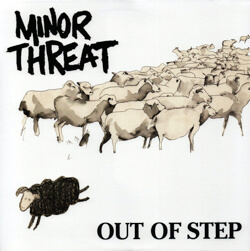 The critical consensus tends to point to the lone album by Rites of Spring as the starting point for the punk offshoot known as emo. True or not, the seeds for that genre were planted by the sole full-length album by fellow D.C. band Minor Threat. Fleshing out their sound considerably by bringing in bassist Steve Hansgen and moving Brian Baker to rhythm guitar, the band let up on the gas pedal just enough to let the music and its fans breathe a little easier. That slight tempo shift allowed singer Ian MacKaye to explore more thoughtful lyrical territory, mostly about the challenges of maintaining adult friendships and watching helplessly while your pals deal with hard times. A far cry from the hardcore jeremiads of the band’s earlier work and a move that gave permission to the rest of the Dischord scene to point their critical eye and barre chords within. —Robert Ham
The critical consensus tends to point to the lone album by Rites of Spring as the starting point for the punk offshoot known as emo. True or not, the seeds for that genre were planted by the sole full-length album by fellow D.C. band Minor Threat. Fleshing out their sound considerably by bringing in bassist Steve Hansgen and moving Brian Baker to rhythm guitar, the band let up on the gas pedal just enough to let the music and its fans breathe a little easier. That slight tempo shift allowed singer Ian MacKaye to explore more thoughtful lyrical territory, mostly about the challenges of maintaining adult friendships and watching helplessly while your pals deal with hard times. A far cry from the hardcore jeremiads of the band’s earlier work and a move that gave permission to the rest of the Dischord scene to point their critical eye and barre chords within. —Robert Ham
8. Metallica: Kill ’Em All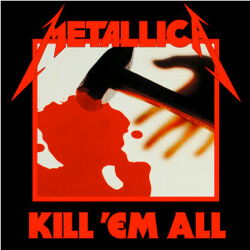 It’s impossible to overstate the impact of Metallica’s debut. Like a shot heard ’round the world, the response to Kill ’Em All by other musicians was immediate and profound. Metallica’s unprecedented combination of speed, energy and economy turned the album into a Big Bang-type event that gave rise not only to the thrash genre, but to an entire musical universe. But if you took a time machine back to 1983, Metallica must have looked like they had a snowball’s chance in hell of ever making it out of the underground gutter they spawned in. Even after 40 years’ worth of bands pushing the envelope further than what Metallica did here (and the band’s own devolution into a bloated, foot-dragging colossus), the album somehow still holds up. Songs like “Whiplash,” “The Four Horsemen” and “Metal Militia” positively burn with a sense of purpose. And, though this sound was considered about as raw as it gets at the time, the sense of locomotion in the blazing tempos hints at an embryonic sophistication. Not to mention that there are actual songs here, believe it or not. Thrash architect and future Megadeth leader Dave Mustaine was already absent by this time, but frontman James Hetfield’s rhythm guitar work provides plenty of thrills on its own, to say the least. If you appreciate any of the ways that metal has intensified and gotten more heavy since 1983, you owe it to yourself to familiarize (or re-familiarize) yourself with Kill ’Em All. —Saby Reyes-Kulkarni
It’s impossible to overstate the impact of Metallica’s debut. Like a shot heard ’round the world, the response to Kill ’Em All by other musicians was immediate and profound. Metallica’s unprecedented combination of speed, energy and economy turned the album into a Big Bang-type event that gave rise not only to the thrash genre, but to an entire musical universe. But if you took a time machine back to 1983, Metallica must have looked like they had a snowball’s chance in hell of ever making it out of the underground gutter they spawned in. Even after 40 years’ worth of bands pushing the envelope further than what Metallica did here (and the band’s own devolution into a bloated, foot-dragging colossus), the album somehow still holds up. Songs like “Whiplash,” “The Four Horsemen” and “Metal Militia” positively burn with a sense of purpose. And, though this sound was considered about as raw as it gets at the time, the sense of locomotion in the blazing tempos hints at an embryonic sophistication. Not to mention that there are actual songs here, believe it or not. Thrash architect and future Megadeth leader Dave Mustaine was already absent by this time, but frontman James Hetfield’s rhythm guitar work provides plenty of thrills on its own, to say the least. If you appreciate any of the ways that metal has intensified and gotten more heavy since 1983, you owe it to yourself to familiarize (or re-familiarize) yourself with Kill ’Em All. —Saby Reyes-Kulkarni
7. Tom Waits: Swordfishtrombones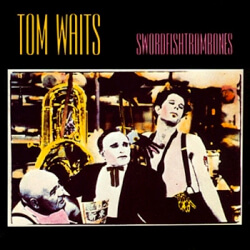 The perplexing, outlandish imagery Swordfishtrombones conjures is befitting of such a surprising and transitional album in Tom Waits’ lengthy catalog. During the making of the album, Waits not only switched record labels but also changed managers and producers, redirecting his relatively conventional piano- and string-based music of the 1970s toward a much darker, more abstract style built around minimal bass, percussion and horns. As such, Swordfishtrombones serves as a willfully weird precursor to Waits’ subsequent experimental classic Rain Dogs. —John Barrett
The perplexing, outlandish imagery Swordfishtrombones conjures is befitting of such a surprising and transitional album in Tom Waits’ lengthy catalog. During the making of the album, Waits not only switched record labels but also changed managers and producers, redirecting his relatively conventional piano- and string-based music of the 1970s toward a much darker, more abstract style built around minimal bass, percussion and horns. As such, Swordfishtrombones serves as a willfully weird precursor to Waits’ subsequent experimental classic Rain Dogs. —John Barrett
6. Talking Heads: Speaking in Tongues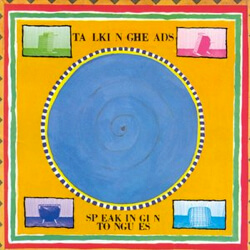 It’s hard to believe that the Talking Heads’ last masterpiece, Speaking in Tongues, came out 40 years ago, given that it feels so timeless even today. Back then, it was the awaited follow-up to the no-skip, no-fault Remain in Light, which was as innovative as it was experimental and perennial. Speaking in Tongues is the band at their most commercial and marketable—lead single “Burning Down the House” remains their only Top-10 hit. It was the first Talking Heads album not produced by Brian Eno since their debut six years prior, but, in many ways, it’s their most ambitious, personal and chaotic. Eno’s departure opened up opportunities for the band to tackle solo stuff, namely drummer Chris Frantz and bassist Tina Weymouth’s side project Tom Tom Club. Nonlinear and gospelized, songs like “Girlfriend Is Better,” “Slippery People and “Making Flippy Floppy” emphasize David Byrne’s songwriting prowess in ways he hadn’t conjured before. But what makes Speaking in Tongues such an important and enigmatic rock ‘n’ roll record is “This Must Be the Place (Naive Melody),” the greatest love song ever performed. “If someone asks, this is where I’ll be,” Byrne croons, tenderly, as the band’s new wave inclinations hush into the whisper of a breathless rapture of disco ostinato. —Matt Mitchell
It’s hard to believe that the Talking Heads’ last masterpiece, Speaking in Tongues, came out 40 years ago, given that it feels so timeless even today. Back then, it was the awaited follow-up to the no-skip, no-fault Remain in Light, which was as innovative as it was experimental and perennial. Speaking in Tongues is the band at their most commercial and marketable—lead single “Burning Down the House” remains their only Top-10 hit. It was the first Talking Heads album not produced by Brian Eno since their debut six years prior, but, in many ways, it’s their most ambitious, personal and chaotic. Eno’s departure opened up opportunities for the band to tackle solo stuff, namely drummer Chris Frantz and bassist Tina Weymouth’s side project Tom Tom Club. Nonlinear and gospelized, songs like “Girlfriend Is Better,” “Slippery People and “Making Flippy Floppy” emphasize David Byrne’s songwriting prowess in ways he hadn’t conjured before. But what makes Speaking in Tongues such an important and enigmatic rock ‘n’ roll record is “This Must Be the Place (Naive Melody),” the greatest love song ever performed. “If someone asks, this is where I’ll be,” Byrne croons, tenderly, as the band’s new wave inclinations hush into the whisper of a breathless rapture of disco ostinato. —Matt Mitchell
5. Madonna: Madonna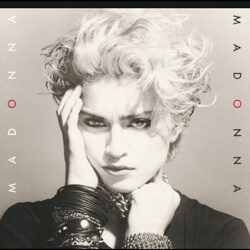 Though sometimes overshadowed by Like a Virgin and Like a Prayer, Madonna’s self-titled debut endures as a steadfast pop masterpiece. At 27 years old, she’d already studied dance with famed choreographer Martha Graham, played drums and sang in a Corona, Queens, band called the Breakfast Club and signed with Sire Records after her single “Everybody” blew up in clubs all across NYC. There was no possible way that Madonna’s first LP could fail, and it didn’t—instead becoming a transcendent exercise in post-disco and electropop. Singles “Holiday,” “Lucky Star” and “Borderline” were immediate hits that vaulted the singer into the echelons of the zeitgeist in near-insurmountable ways. Few artists are more emblematic of the MTV era, and Madonna’s stranglehold on pop music can be traced back to this very record. Without Madonna, the landscape of dance music suffers greatly. It’s likely the best debut album of the 1980s, and, perhaps, one of the greatest debuts of all-time. —Matt Mitchell
Though sometimes overshadowed by Like a Virgin and Like a Prayer, Madonna’s self-titled debut endures as a steadfast pop masterpiece. At 27 years old, she’d already studied dance with famed choreographer Martha Graham, played drums and sang in a Corona, Queens, band called the Breakfast Club and signed with Sire Records after her single “Everybody” blew up in clubs all across NYC. There was no possible way that Madonna’s first LP could fail, and it didn’t—instead becoming a transcendent exercise in post-disco and electropop. Singles “Holiday,” “Lucky Star” and “Borderline” were immediate hits that vaulted the singer into the echelons of the zeitgeist in near-insurmountable ways. Few artists are more emblematic of the MTV era, and Madonna’s stranglehold on pop music can be traced back to this very record. Without Madonna, the landscape of dance music suffers greatly. It’s likely the best debut album of the 1980s, and, perhaps, one of the greatest debuts of all-time. —Matt Mitchell
4. David Bowie: Let’s Dance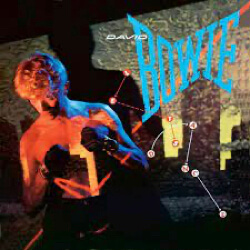 Let’s Dance may be Bowie’s most commercial album – written in the wake of an experimental era that saw him leave his prior label and longtime producer Tony Visconti – and, some say, his last hurrah before a period of sustained creative weakness. “Let’s Dance” and “Modern Love” have stood the test of time as some of Bowie’s best dance-funk-pop concoctions ever, with plentiful admixtures of Beatles-y Britpop and pure ‘80s-rock adrenaline throughout. A nihilistic, moody undercurrent in Let’s Dance pushes against its dancehall perfection – pit “Cat People (Putting Out Fire)” against its follow-up, closer “Shake It,” and you’ll see what I mean. In Let’s Dance, Bowie boogies between his ever-youthful big-band optimism and the militant years of Maggie Thatcher as only he can, with a parade of piano, sax and synths following him as he goes. —Miranda Wollen
Let’s Dance may be Bowie’s most commercial album – written in the wake of an experimental era that saw him leave his prior label and longtime producer Tony Visconti – and, some say, his last hurrah before a period of sustained creative weakness. “Let’s Dance” and “Modern Love” have stood the test of time as some of Bowie’s best dance-funk-pop concoctions ever, with plentiful admixtures of Beatles-y Britpop and pure ‘80s-rock adrenaline throughout. A nihilistic, moody undercurrent in Let’s Dance pushes against its dancehall perfection – pit “Cat People (Putting Out Fire)” against its follow-up, closer “Shake It,” and you’ll see what I mean. In Let’s Dance, Bowie boogies between his ever-youthful big-band optimism and the militant years of Maggie Thatcher as only he can, with a parade of piano, sax and synths following him as he goes. —Miranda Wollen
3. U2. War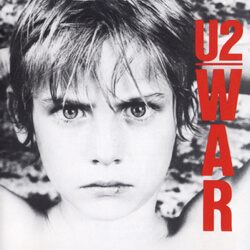 For the cover of their third album, U2 returned to boy that graced the cover of their debut, Boy. But in the three intervening years, he’s lost his innocence, and the band open War with “Sunday, Bloody Sunday,” a remembrance of the massacre of unarmed protesters in Derry, Northern Ireland, barely a decade before. The militaristic drumbeats and overtly political message of the opener continue throughout the album: in “Seconds,” which even breaks in the middle to reveal young kids chanting “I wanna be an airborne ranger / I wanna live my life in danger” before returning to lyrics about nuclear war; in “New Year’s Day” about Lech Wałęsa’s Solidarity movement advocating for worker’s rights and social change in communist Poland; and “The Refugee,” about one of the many victims of the many wars going in 1983. But the band’s earnest spotlight on injustice in the world was matched by its earnest desire in “Two Hearts Beat As One” and earnest optimism in the closing song, “40,” an adaption of Psalm 40 with Bono pleading “I will sing, sing a new song / How long to sing this song?” The latter close every song on the tour for the album, as well as the band’s live album Under a Blood Red Sky. The unrelenting passion might have been off-putting if not for the urgent guitar playing of The Edge and the specific alchemy these four Irishmen developed in the 1980s making them one of the biggest—and yes, best—bands in the world. —Josh Jackson
For the cover of their third album, U2 returned to boy that graced the cover of their debut, Boy. But in the three intervening years, he’s lost his innocence, and the band open War with “Sunday, Bloody Sunday,” a remembrance of the massacre of unarmed protesters in Derry, Northern Ireland, barely a decade before. The militaristic drumbeats and overtly political message of the opener continue throughout the album: in “Seconds,” which even breaks in the middle to reveal young kids chanting “I wanna be an airborne ranger / I wanna live my life in danger” before returning to lyrics about nuclear war; in “New Year’s Day” about Lech Wałęsa’s Solidarity movement advocating for worker’s rights and social change in communist Poland; and “The Refugee,” about one of the many victims of the many wars going in 1983. But the band’s earnest spotlight on injustice in the world was matched by its earnest desire in “Two Hearts Beat As One” and earnest optimism in the closing song, “40,” an adaption of Psalm 40 with Bono pleading “I will sing, sing a new song / How long to sing this song?” The latter close every song on the tour for the album, as well as the band’s live album Under a Blood Red Sky. The unrelenting passion might have been off-putting if not for the urgent guitar playing of The Edge and the specific alchemy these four Irishmen developed in the 1980s making them one of the biggest—and yes, best—bands in the world. —Josh Jackson
2. New Order: Power, Corruption & Lies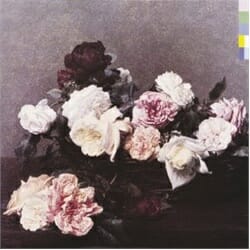 In 1981, the German conceptual artist Gerhard Richter graffitied a phrase onto one wall of the building holding his own exhibition: “Power, Corruption and Lies.” That heady title names a New Order record that has gone down in history as the band’s assertion of self. Released on May 2, 1983, Power, Corruption and Lies is a record for springtime; an album in bloom. The flowers on the cover—a reproduction of the Henri Fantin-Latour painting “A Basket of Roses” designed by Peter Saville—represented the seductive allure of the title’s vices, but they also suggest the group’s rebirth. Two months after the release of their groundbreaking single “Blue Monday,” New Order had only just risen from Joy Division’s ashes after Ian Curtis’ 1980 suicide—but they were channeling their mourning into reinvention. On Power, Corruption and Lies, the post-punk bones of Joy Division and New Order’s first outing Movement are uplifted with new sounds and subjects. The former come courtesy of Gillian Gilbert’s keys and the influence of dance music and early electronic acts like Kraftwerk, whose album Pan-Europe Express was Joy Division’s concert warm-up music of choice. The latter takes shape in its lyrics. The crises of the groups’ previous works are still there, profoundly influenced by their real-life confrontation with loss. But, with Bernard Sumner as the frontman and lead guitarist, Power’s anxieties are cut with humor, connection and curiosity. —Annie Parnell
In 1981, the German conceptual artist Gerhard Richter graffitied a phrase onto one wall of the building holding his own exhibition: “Power, Corruption and Lies.” That heady title names a New Order record that has gone down in history as the band’s assertion of self. Released on May 2, 1983, Power, Corruption and Lies is a record for springtime; an album in bloom. The flowers on the cover—a reproduction of the Henri Fantin-Latour painting “A Basket of Roses” designed by Peter Saville—represented the seductive allure of the title’s vices, but they also suggest the group’s rebirth. Two months after the release of their groundbreaking single “Blue Monday,” New Order had only just risen from Joy Division’s ashes after Ian Curtis’ 1980 suicide—but they were channeling their mourning into reinvention. On Power, Corruption and Lies, the post-punk bones of Joy Division and New Order’s first outing Movement are uplifted with new sounds and subjects. The former come courtesy of Gillian Gilbert’s keys and the influence of dance music and early electronic acts like Kraftwerk, whose album Pan-Europe Express was Joy Division’s concert warm-up music of choice. The latter takes shape in its lyrics. The crises of the groups’ previous works are still there, profoundly influenced by their real-life confrontation with loss. But, with Bernard Sumner as the frontman and lead guitarist, Power’s anxieties are cut with humor, connection and curiosity. —Annie Parnell
1. R.E.M.: Murmur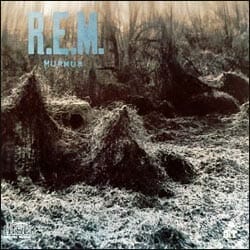 You know about the mumbling, the muttering, the indie success story, the simultaneous conquest of college radio and Rolling Stone—and subsequently, the world. But maybe you don’t know how punk never quite married Rickenbacker arpeggios until “Radio Free Europe” and “Sitting Still” made it safe for bands like the dB’s. Maybe in retrospect it’s amazing how “Talk About the Passion” and “Perfect Circle” were such power ballads. And maybe you don’t have to understand a word of “Moral Kiosk,” “Catapult” or “We Walk” to hear how every odd harmony, surf lick and overdubbed billiard ball made perfect sense. — Dan Weiss
You know about the mumbling, the muttering, the indie success story, the simultaneous conquest of college radio and Rolling Stone—and subsequently, the world. But maybe you don’t know how punk never quite married Rickenbacker arpeggios until “Radio Free Europe” and “Sitting Still” made it safe for bands like the dB’s. Maybe in retrospect it’s amazing how “Talk About the Passion” and “Perfect Circle” were such power ballads. And maybe you don’t have to understand a word of “Moral Kiosk,” “Catapult” or “We Walk” to hear how every odd harmony, surf lick and overdubbed billiard ball made perfect sense. — Dan Weiss
Listen to our Best Albums of 1983 Spotify playlist.



































